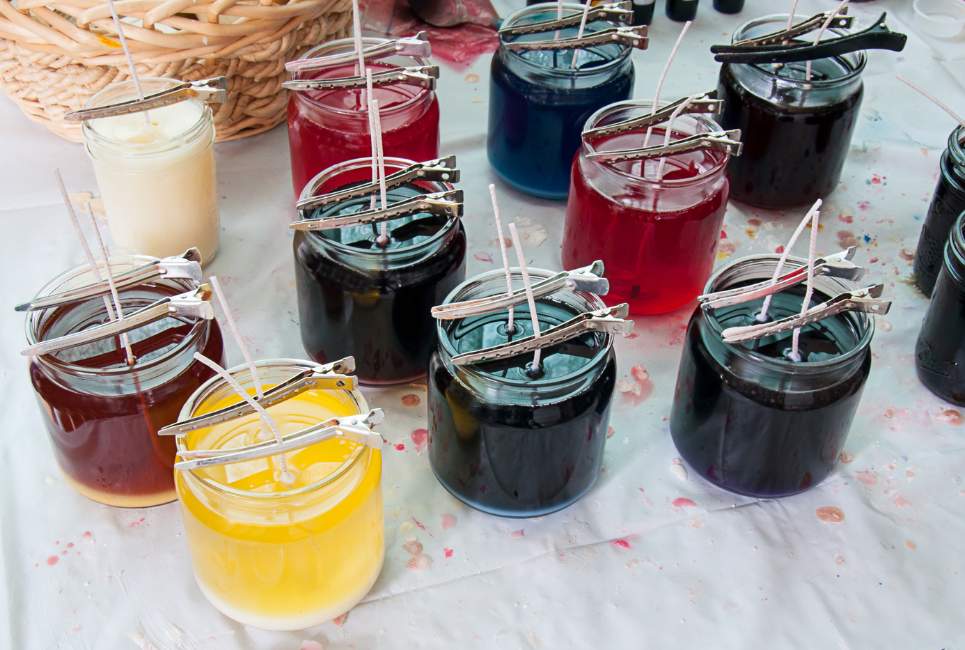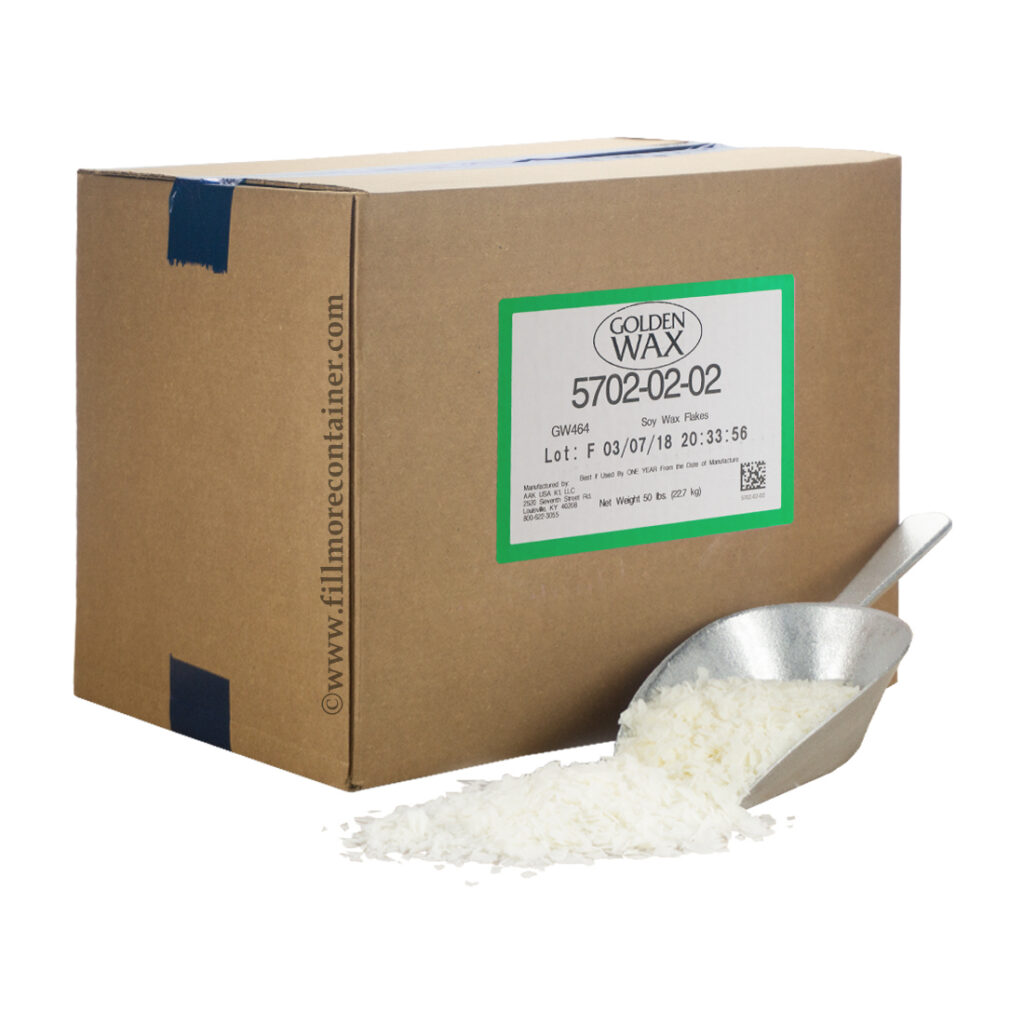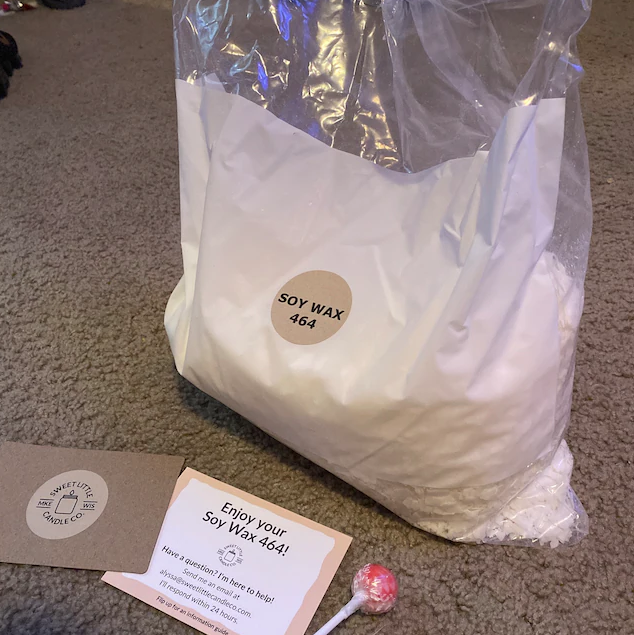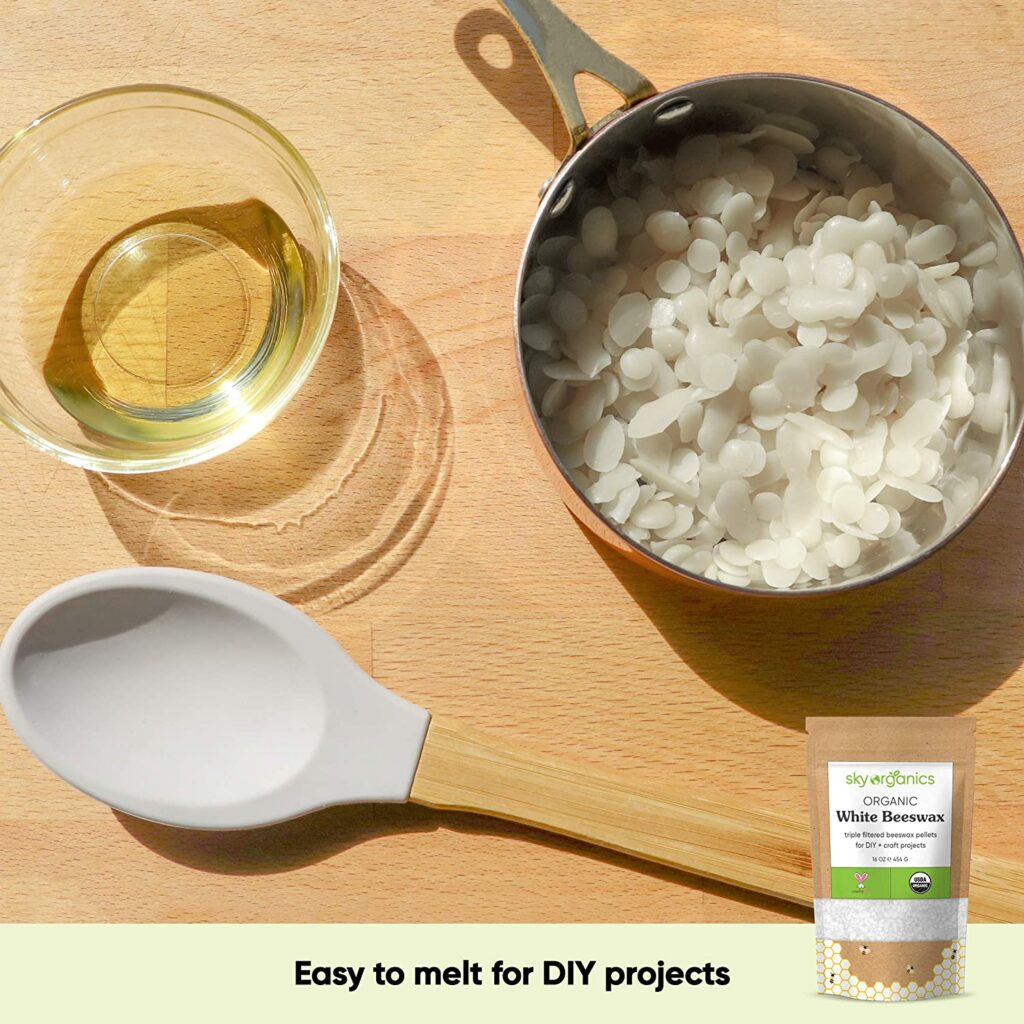- What is the Best Wax for Candle Making: Top Recommended Brands - September 6, 2021
Do you want to get started making candles but don’t know where to get started?
I feel you! When I first started trying to learn how to make candles for my cosmetic business, I was so overwhelmed. Just picture me pulling my hair out, trying not to cry, as I had 1,533,592 different people telling me which was the “right” or “best” wax to use for candle making. But, every single person said a different answer.
Yes, I may be being overdramatic, but it’s what I felt like on the inside. There are so many different waxes out there, and depending on what type of candle you want to make, there’s actually a right wax for you to use for each type of candle. How will you ever get to the bottom of this?
Don’t worry; I’m here to help you! I’m going to walk you through the entire process of how to choose the best wax for candle making. By the time you get to the bottom of this guide, the only question you’ll be asking yourself is about what fragrances you should be adding to your candles! Let’s jump right in.

What are the different types of candle waxes?
As you may already know, there’s a variety of different candle waxes on the market. Not all candle waxes are the same, so it’s very important that you chose the right type of wax for your candle project.
Let’s take a dive into looking at the different types of candle waxes:
Soy wax
Soy wax is a popular choice among people who are interested in having clean-burning candles. I personally love soy wax because it burns slowly, so it makes the candles I make for my business last a lot longer. Plus, soy wax comes from soybeans, so it’s a lot more friendly to the environment than other types of wax.
However, soy wax isn’t necessarily a great option for individuals who are concerned about deforestation. Also, soy wax is tricky to work with because of how much the wax changes depending on the temperature. Soy wax is known to frost after pouring, which is when white spots develop on the wax. Plus, soy wax doesn’t hold fragrances very well. As someone who likes to make candles that are heavily scented, I find this is my biggest challenge with soy waxes.
AAK Golden Brands 464 Soy Wax
This soy wax is my absolute favorite to use. If you’re unable to find this type, I also highly recommend the AAK Gold Brands 444. The 444 is similar to the 464, but it just has a higher melting point.

I love using this wax because it really produces a strong throw while I’m burning the wax. The max fragrance load for this wax is 10%, which is around 1.6 ounces per pound. The melting point of this wax is between 113 to 119 degrees.
Pros:
- Great scent throw
- Doesn’t frost
- It holds color very well
Cons:
- Crates sometimes appear when pouring
- Some people have problems with this wax cracking
- Long curing time for optimal throw
Paraffin wax
Paraffin wax is the cheapest candle wax on the market. If you go to a store like Walmart or Target, you’ll find a lot of the candles on the shelves are made with this type of wax. Not only is paraffin wax super cheap to get your hands on, but it’s a great wax for candling making because it’s able to hold a large amount of color and a lot of fragrance.
But, it’s important for you to know that this type of wax comes with different melting points. So, depending on what type of candle project you’re looking to get yourself into, this is a great option for you to look into for whatever your candle project may be.
However, the biggest drawback of paraffin wax is that it isn’t an environmentally friendly wax. That’s because it’s made as a byproduct of the oil industry, which is something you may want to consider if you’re trying to keep your candles environmentally friendly. Also, if you aren’t extra careful with paraffin wax candles, burning the candle can create soot.
IGI 4627 Comfort Blend Wax
This paraffin wax contains paraffin and no additional additives. All you have to worry about doing is melting down the wax, adding in fragrance, and adding in color. What I love about this wax is that the max fragrance load for this wax is 12%, which is around 2 ounces per one pound of wax. Plus, it has the best cold and hot throw that I’ve seen in any paraffin wax.

Pros:
- Great for making both tealight and container candles
- 12% max fragrance loan
- Outstanding hot and cold throw
Cons:
- It needs to cure for five days for optimal throw
- Black soot comes from this type of wax
Coconut wax
Coconut wax is the newest wax to make its way into the candle industry. It’s so new that some people may not even know it exists. Not only does coconut wax come from coconuts, but it is also great for holding both color and fragrance. Yet, it’s a very expensive wax to get your hands on, partially because it’s so new to the market. But, if you want to invest in a candle that isn’t going to create soot when you’re burning it, you should look into using coconut wax.
Cargill Naturewax C-6 Soy and Coconut Wax Blend
While this coconut wax is technically blended with soy, it’ll help you to save money on this candle. The max fragrance load for this wax is 10%, but it does require a seven-day cure time to ensure your fragrance throw is optimal. However, one of the biggest disadvantages of this candle wax is that the surface of the wax appears bumpy after you burn the candle a few times. But, this is a common occurrence with natural waxes and isn’t necessarily a problem you’ll run into with just this blend.

Pros:
- Has a 10% max fragrance loan
- Great for candles, container candles, and tealights
- The blend of coconut helps to reduce frosting
Cons:
- Your hands will have a slight amount of residue on them after your handle the coconut wax
- Bumpy candle surface after a few burns
- Only performs well with cotton fibers or paper fibers blended in
Beeswax
Beeswax is the oldest type of candle wax on the market, but some people choose to avoid it because it isn’t vegan. However, this is an environmentally friendly type of wax because it’s a by-product of the production of honey from bees.
Plus, when you burn beeswax, it creates a sweet aroma. Some people even claim that beeswax helps to purify the air surrounding the candle. I personally really like beeswax because it’s a harder wax, so it holds up well when I’m trying to make wax candle sculptures.
Sky Organics White Beeswax Pellets
I love how easy it is to measure and melt with these beeswax pellets. Not only do I get the chance to support a family-owned business when I buy these belts, but they’re made in small batches, so I know every single bag I order is high-quality. Plus, I love how clean the pellets are because there aren’t any unclean and unpleasant smells that come from this wax. There isn’t any color with these pellets, so they hold both fragrance and color incredibly well.

Pros:
- Easy to tint
- Triple filtered
- Great for small projects
Cons:
- Only available in small bags
- Only available in pellets
FAQs
Chances are, you still have some questions about choosing the best type of candle wax for your candle-making project. Don’t worry, I’m here to help you! Let’s take a closer look at your candle wax FAQs:
Question: How do you melt wax for candle making?
Answer: If you’re a small-time candle maker, you can melt the wax with a double-boiler. You don’t have to invest in expensive (and bulky) candle-making equipment if you aren’t making a massive amount of candles every day.
The first thing you can do is to fill up a large pan with water. You’ll only want to fill it up to the halfway point. Then, you’ll want to place this pan on top of a hot plate to heat it up. Then, in a smaller bowl or a smaller pan, place your wax into this. You’ll then want to put the smaller container on top of the larger pan that has the water in it. Turn the heat on medium heat and wait for your wax to meltdown. Just be careful not to let your wax get too hot!
Question: How do you measure wax for candle making?
Answer: To figure out how much wax you’re going to need for your project, think about how many candles you’re going to want to make. Then, multiply how many candles you’re making by the amount of wax your candle holds. So, if you’re going to make 10 candles and the jars hold 10 ounces, you’ll multiple 10 x 10, leaving you with 100. After that, you’ll want to divide by 20.
So, 10 (candles) x 10 (ounce per container) = 100 total ounces / 20 = 5 pounds of wax needed.
Question: How do you color wax for candle making?
Answer: The easiest way for you to add color to your candles for candle making it with a liquid dye. However, color cubes also exist. Liquid dye is great for beginnings because it’s a lot easier to control how much color you’re adding in.
You’ll need to purchase liquid wax color somewhere. Do not buy food dye or water-based dyes, as these won’t work. To color your wax, you’ll want to use around eight drops of dye per one pound of wax. Only add in the liquid dye after the wax is melted, and be sure to fully stir it in before letting your wax cool down too much.
Question: What type of candle wax should you use?
Answer: The type of candle wax you choose to use to start making candles really all depends on your personal preferences. If you want to choose a wax that’s clean and environmentally friendly, you should choose beeswax. However, if you want something that’ll give out an amazing scent throw, look into paraffin wax.
The strength of your fragrance when your candle is burning (the throw), affordability, and the impacts the candle wax has on the environment are the points that’ll lead you to choose one specific type of wax over the other. Keep in mind that there isn’t one “superior” type of candle wax for all candle projects over the other. Each has its own perks and drawbacks.
Lastly, it’s also important for you to consider other factors that go into how well your candle burns. The grade of the fragrance quality you’re using, the combination of the wax (if you’re using a blend), the type of wax your choose, what type of candle you’re making, the length of the wick, and the quality of the wick all impact how great your candle burns. Each of these factors individually and then combined will create a unique experience for the candle you make and burn.
Wrapping up
Out of all of the types of waxes, I highly recommend trying out paraffin and beeswax. In my experience, soy wax is tricky to work with if you don’t have any experience making candles. For me personally, I know that I get frustrated with my candles (when I was first starting out) when they didn’t throw very well. But, I don’t normally have that problem when working with beeswax or paraffin, as they’re much more “beginner-friendly.”
Want more tutorials on how to start working with candles? Check out the rest of our website today!
Find more materials for crafting to get inspired and make more incredible projects:

